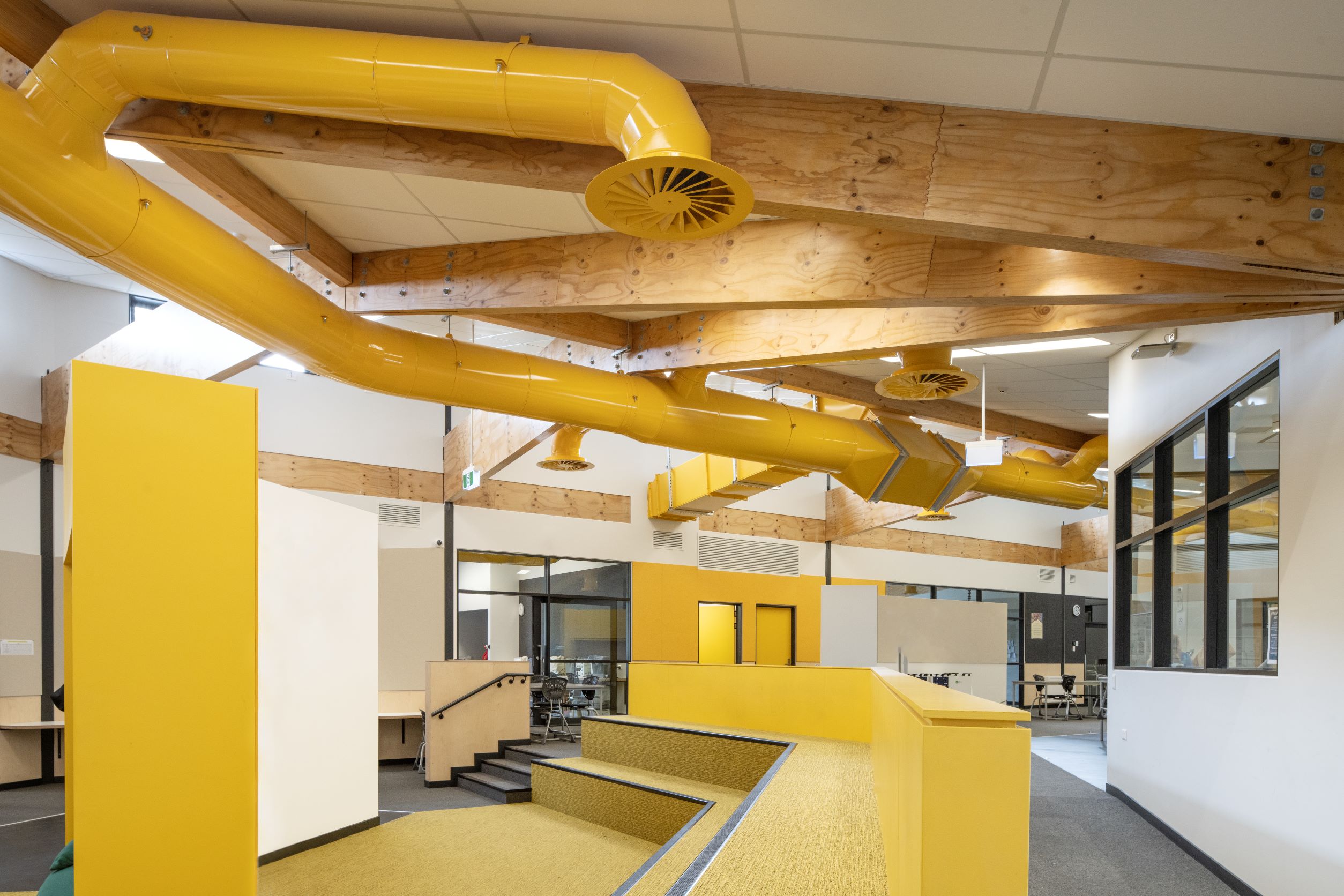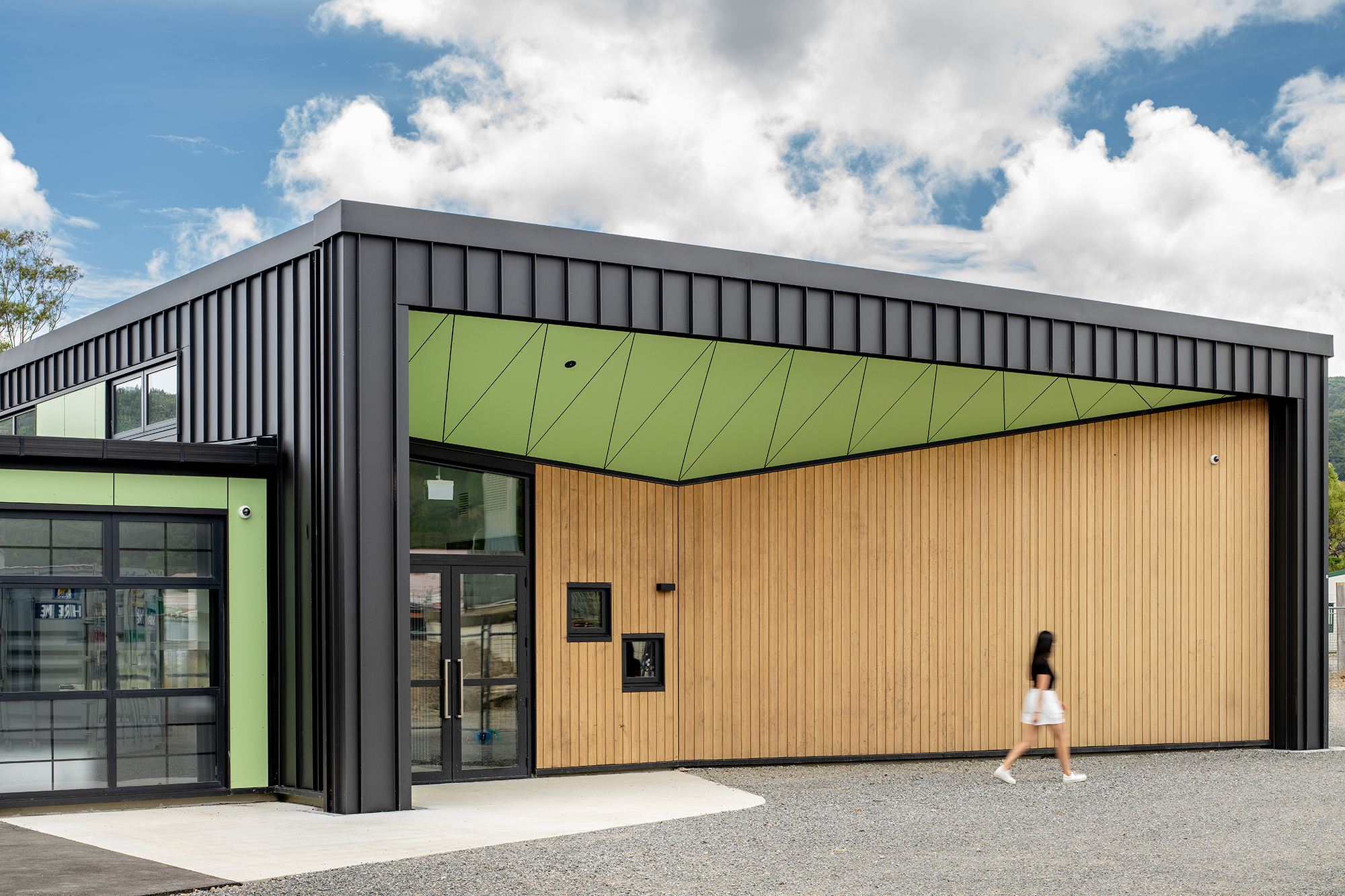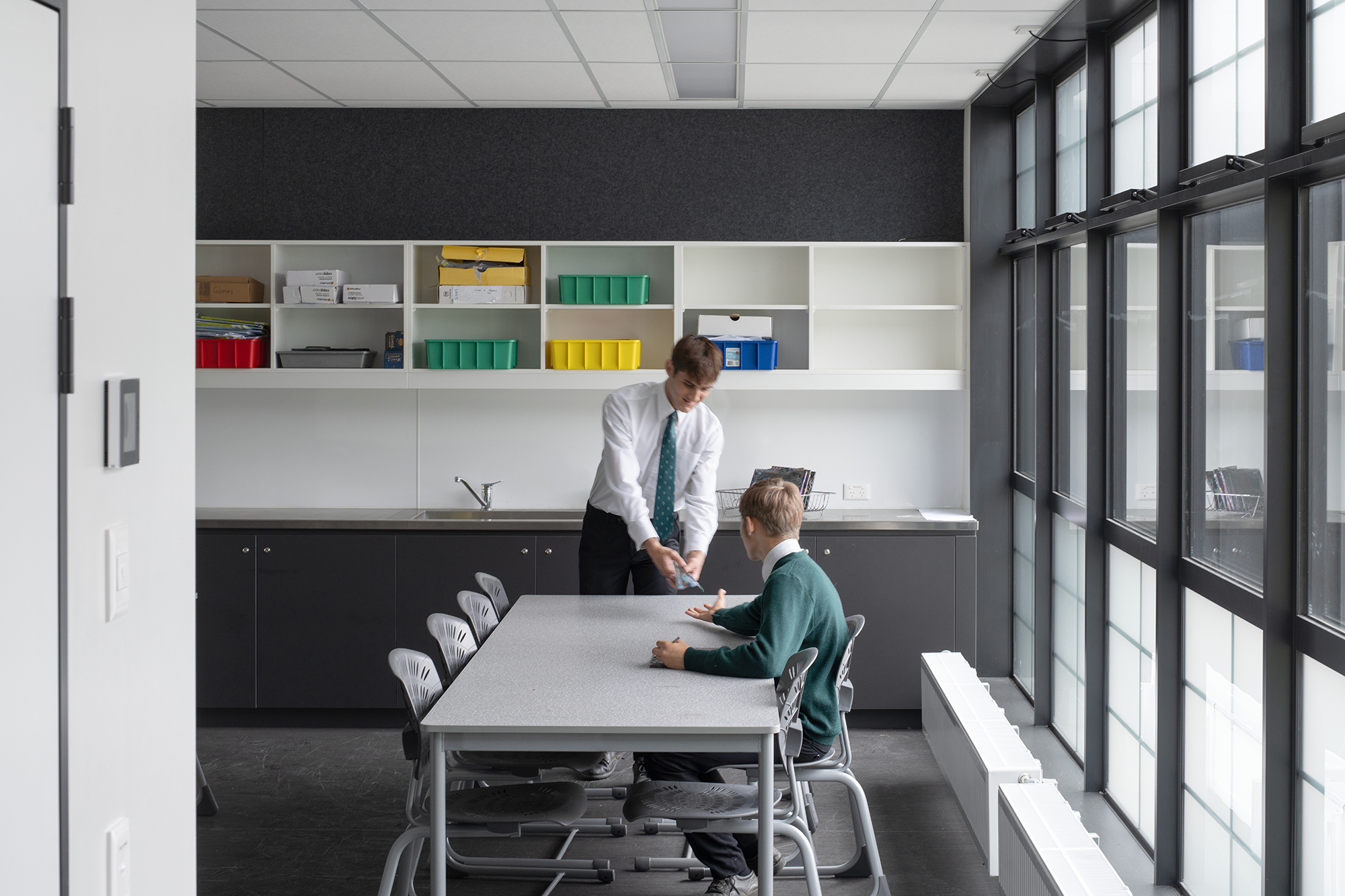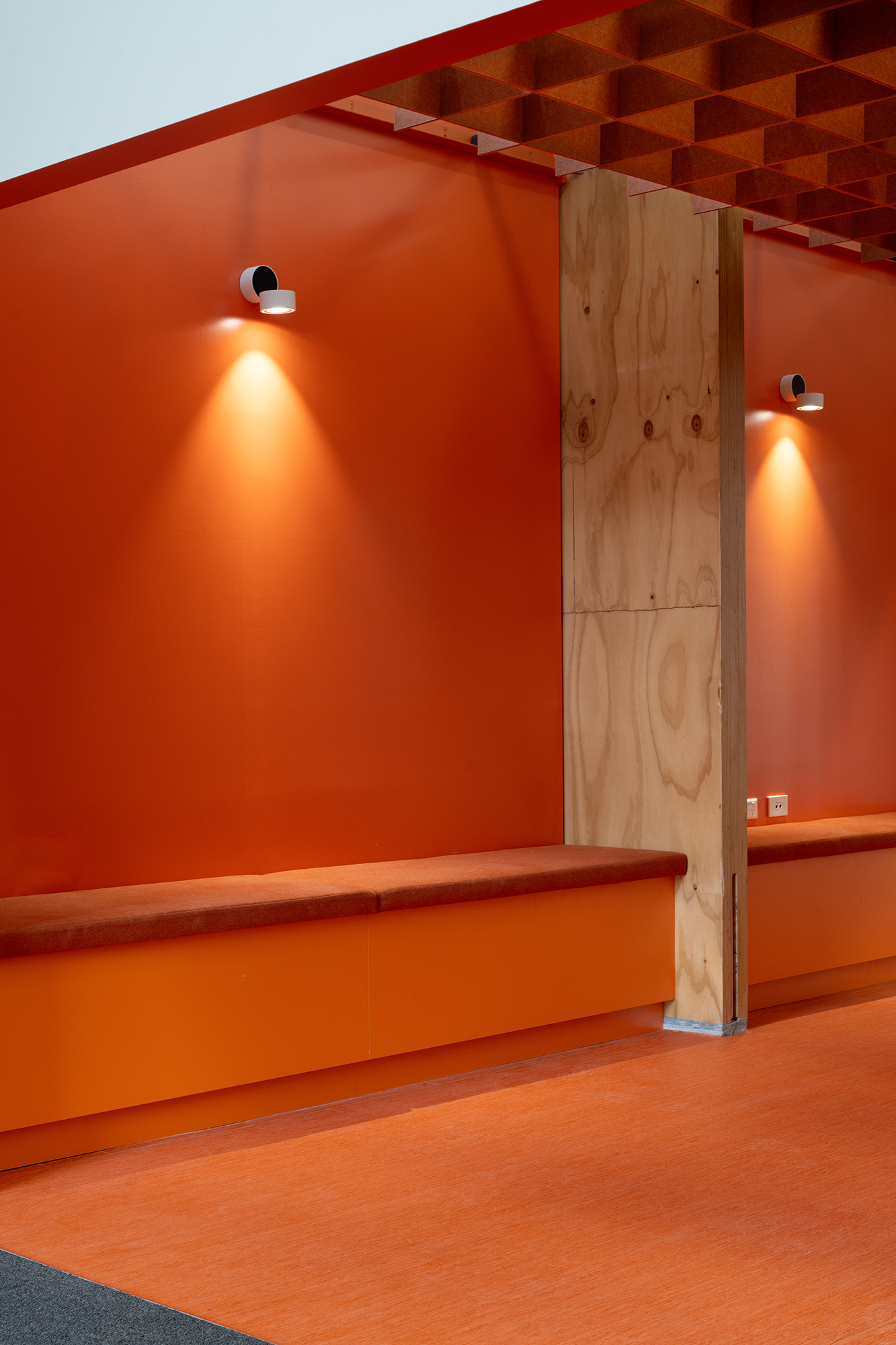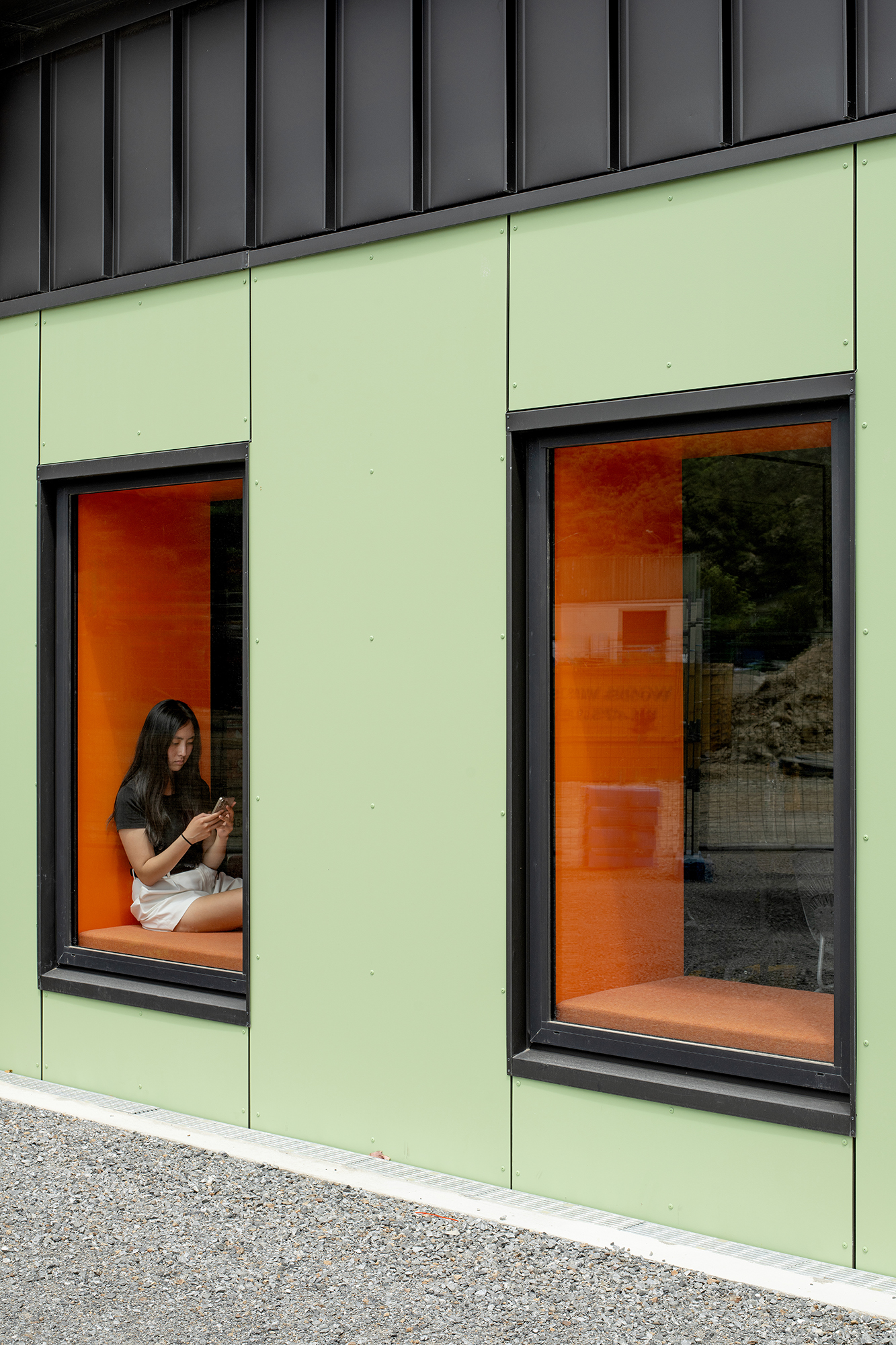Stephenson & Turner partnered with the Ministry of Education and the Wainuiomata High School whānau and community on a major redevelopment project that will transform the school’s facilities. This redevelopment involves a comprehensive approach to architecture, engineering, and lighting design, offering a sustainable, engaging, and purpose-driven learning environment for the Wainuiomata community.
The S&T design team has led the process, from master planning to construction, delivering 33 new and refurbished teaching spaces to meet the school’s needs while addressing weathertightness and building condition issues. The design incorporates advanced architecture solutions that promote flexibility and adaptability in learning spaces and allows for focus-based teaching.
As part of the project, engineering services have been integrated to allow the school’s infrastructure to support modern educational practices. The installation of the largest pre-assembled wood pellet boiler in the North Island will provide an energy-efficient heating solution, supporting sustainable building practices. This biomass heating system is a key part of S&T's commitment to environmental sustainability, reducing carbon emissions while providing a reliable and cost-effective energy source for the school.
Additionally, our lighting design team played a crucial role in creating dynamic, well-lit spaces that enhance the learning experience. Thoughtful lighting design not only improves the aesthetic appeal of the school but also supports the functional needs of the classrooms, common areas, and specialised learning spaces.
The redesign of Wainuiomata High School centered around modernising the delivery of the curriculum. By focusing on student-selected courses and adaptable learning environments, the school provides a space where students can thrive. The use of sustainable architecture principles, such as natural ventilation, daylight-responsive lighting, and energy-efficient heating, allows the campus to remain a model for future educational developments.
The new learning environment will help students acquire 21st-century skills, and the integration of biomass heating systems sets an example for future sustainable school architecture projects. S&T's holistic approach to engineering, lighting, and architecture allowed this redevelopment to provide lasting benefits to both the school and the broader community.

